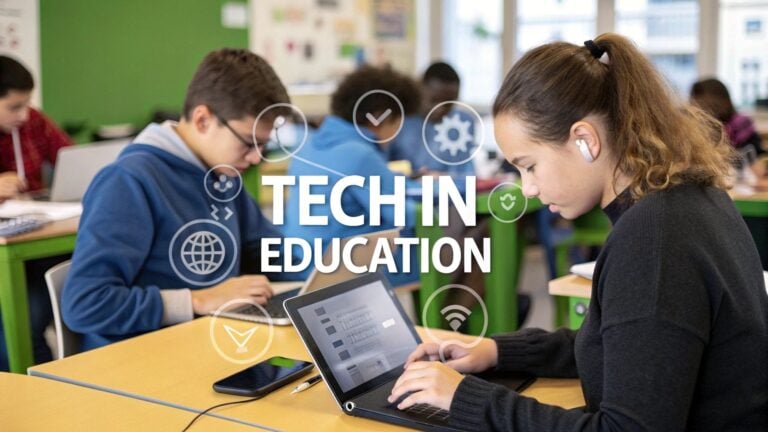Discovery-Based Learning: Why We Learn by Doing
In traditional classrooms, information typically flows in one direction, from teacher to student. But what if we flipped this model on its head? What if students became active explorers rather than passive recipients of knowledge?
This is the essence of discovery-based learning, an approach that’s transforming education by putting curiosity and exploration at the center of the learning experience.

What Is Discovery-Based Learning?
Discovery-based learning is an educational approach where students learn by exploring and solving problems rather than being directly instructed.
Instead of memorizing facts or listening to lectures, students actively engage with materials, ask questions, and uncover solutions themselves. Teachers serve as guides on this journey, providing resources and direction while allowing students to take the lead in their learning through hands-on experiences.
“In the discovery classroom, questions are more important than answers, exploration more valued than acquisition, and puzzlement more acceptable than certainty.”
This approach stands in stark contrast to traditional teaching methods. Rather than starting with explanations and concepts, discovery learning begins with exploration and experience.
Students interact with objects, conduct experiments, pursue investigations, and solve authentic problems, all before formal explanations are provided.
The Core Principles That Make Discovery Learning Work
At its heart, discovery-based learning is built on several foundational principles that work together to create powerful learning experiences.
Active Participation and Hands-On Exploration
When students physically interact with learning materials, whether they’re building structures, conducting experiments, or creating models, they form stronger neural connections than when simply listening or reading.
In a science classroom, for example, students might experiment with various materials to discover which conduct electricity rather than being given a list to memorize.
This physical interaction engages multiple senses and creates memorable experiences that help cement concepts in students’ minds. The tactile nature of discovery learning makes abstract concepts concrete and accessible.
Problem-Solving as the Path to Understanding
Discovery learning places real problems at the center of the educational experience. Students might be challenged to design a garden that attracts pollinators, create a water filtration system using household materials, or develop a more efficient paper airplane design.
These authentic challenges require students to apply reasoning, test hypotheses, and develop creative solutions. The struggle of working through these problems, with appropriate support, builds resilience and problem-solving capabilities that transfer to other contexts.

Exploration Before Explanation
In traditional teaching, explanations typically come first, followed by examples and practice. Discovery learning reverses this sequence: exploration comes first, with formal explanations following only after students have had the chance to develop their own understandings.
This sequence mirrors how learning happens naturally outside the classroom. Children don’t learn to walk by listening to lectures on bipedal locomotion. They explore, experiment, fail, adjust, and try again. By honoring this natural learning process, discovery-based approaches tap into students’ innate curiosity and drive to make sense of their world.
The Discovery Learning Process: A Practical Guide
Implementing discovery learning follows a natural progression that moves from curiosity to application. Here’s how the process typically unfolds:
First, teachers establish an intriguing challenge or question that captures student interest while connecting to learning objectives. Effective challenges are open-ended enough to allow for exploration but focused enough to guide students toward important concepts.
Next comes the exploration phase, where students interact with carefully selected materials and resources. The teacher’s role here shifts to that of observer and guide, asking thoughtful questions that prompt deeper thinking without providing ready-made answers.
As students explore, teachers facilitate discussions that help students articulate their observations and findings. Questions like “What patterns are you noticing?” or “How might you explain what you’re seeing?” encourage students to verbalize their thinking and refine their understanding.
Only after students have had substantial time to explore and develop their own ideas does the teacher help connect these discoveries to formal concepts and terminology. This timing ensures that explanations build on students’ direct experiences rather than existing as abstract information.
Finally, students apply their newly constructed knowledge to novel situations, reinforcing learning and demonstrating understanding. This application phase is crucial for transferring knowledge from the specific context of discovery to broader applications.
Real-World Examples That Bring Discovery Learning to Life

Discovery learning can be adapted across subject areas and age groups. Here are some compelling examples:
In mathematics, elementary students might use pattern blocks to explore fractions before learning formal definitions and procedures. By physically manipulating pieces that represent halves, quarters, and thirds, students develop intuitive understanding of fraction concepts that serves as a foundation for more abstract operations later.
Science classes naturally lend themselves to discovery approaches. Middle school students investigating ecosystem relationships might create terrariums and observe changes over time, developing hypotheses about the interactions between plants, soil, water, and light before learning formal ecological principles.
Even history can embrace discovery learning. High school students might analyze primary source documents from different perspectives on a historical event, uncovering biases and conflicting accounts before synthesizing their understanding of what likely occurred.
The Compelling Benefits of Discovery-Based Learning
Research and classroom experience have identified several significant advantages when students learn through discovery:
- Discovery learning develops deeper conceptual understanding rather than surface-level memorization. When students construct knowledge through exploration, they grasp underlying principles rather than just facts and procedures.
- Problem-solving capabilities flourish in discovery environments. Students become comfortable with complexity and develop strategies for approaching unfamiliar challenges, a critical skill in today’s rapidly changing world.
- Perhaps most importantly, discovery learning cultivates intrinsic motivation and genuine curiosity. When students experience the satisfaction of figuring something out for themselves, they develop a taste for learning that extends beyond classroom requirements.
Addressing Common Questions and Concerns
While discovery learning offers powerful benefits, it also raises questions for educators and parents:
Does discovery learning work for all subjects?
While some concepts may require more direct instruction, elements of discovery can enhance learning across disciplines. Even in skill-based areas like reading or mathematics, exploration can build understanding that makes skill practice more meaningful.
What about students who struggle with open-ended tasks?
Discovery learning doesn’t mean abandoning structure or support. Teachers carefully scaffold experiences, providing more guidance for students who need it while maintaining the essential elements of exploration and problem-solving.
Is discovery learning just unstructured play?
Effective discovery learning is intentionally designed with clear learning goals, carefully selected materials, and strategic teacher guidance. The exploration may look like play, but it’s purposeful play directed toward specific learning outcomes.
Moving Forward with Discovery Learning
Implementing discovery approaches doesn’t require overhauling everything at once. Teachers can start by identifying one unit or concept that might benefit from more exploration, then designing an investigation that allows students to discover key principles before formal instruction.
Parents can support discovery learning by asking open-ended questions, providing rich materials for exploration, and resisting the urge to explain concepts before children have had the chance to puzzle through them. Something as simple as asking “What do you think might happen if…” rather than providing immediate answers can nurture the discovery mindset.
The shift toward discovery-based learning represents an important evolution in education, one that honors how humans naturally learn and prepares students for a future that will demand curiosity, creativity, and problem-solving.
By balancing structured guidance with genuine exploration, discovery learning creates powerful learning experiences that stick with students long after the lesson ends.






